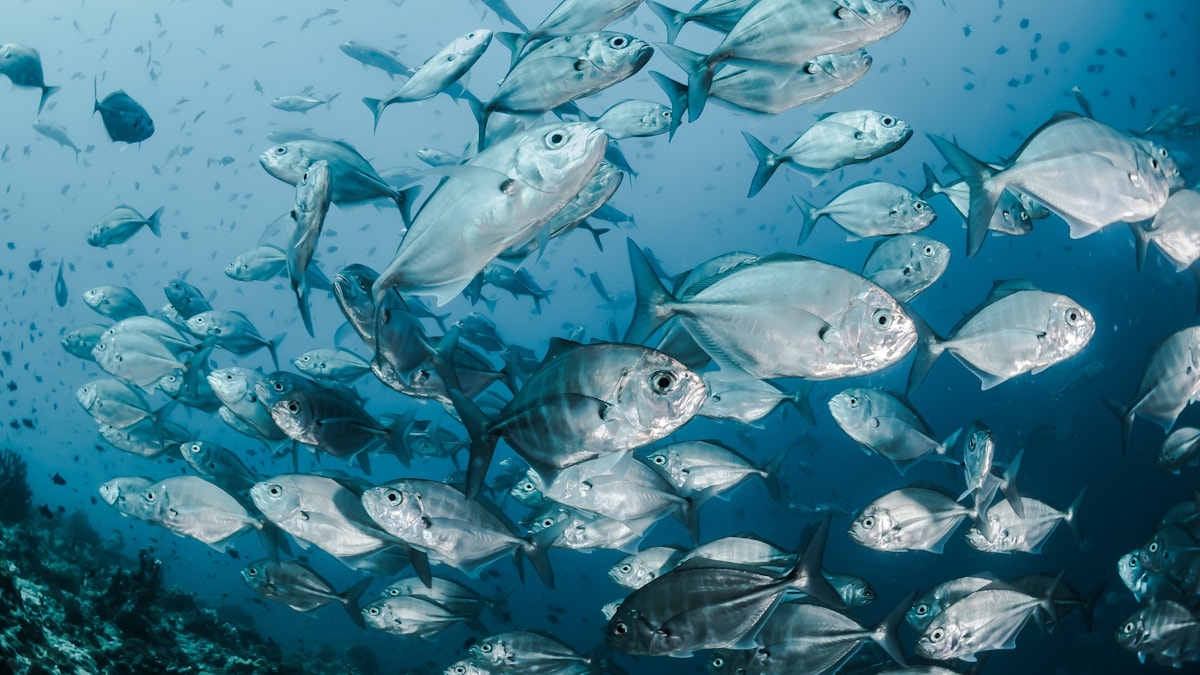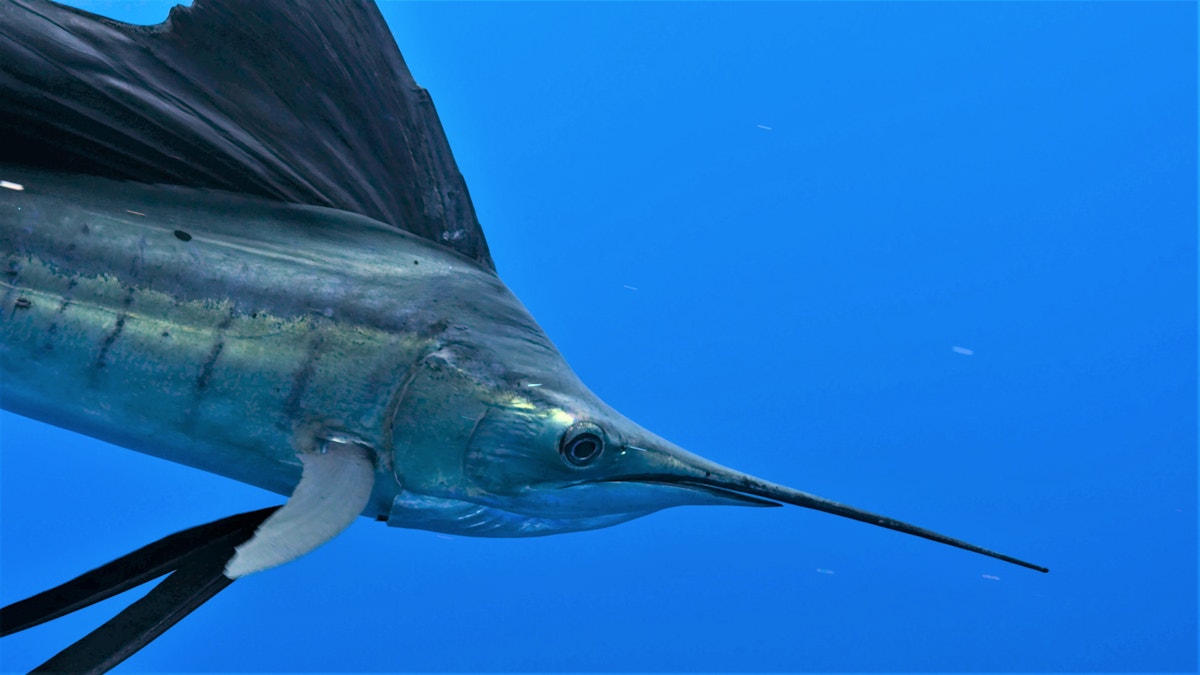
Dr Dazza: What do fish see?
Published 5:00am 23 September 2022

By Daryl McPhee, Associate Prof Environmental Management Bond University
Most bony fish have eyes that are structurally similar to those of birds and mammals including humans. Reflected light enters the eye through a cornea, passes through a pupil to be focused on the retina, where cone cells and/or rod cells convert the light into electrical impulses which the optic nerve provides to the brain to produce an image.
However, there are important differences between a fish eye and our eyes. The human eye focuses by adjusting the thickness of the lens, whereas most fish adjust focus by moving the lens closer or further from the retina. What a fish sees and what we see is very different, and there is also variability in vision between fish species.
The visual environment for fish is more dynamic than that for terrestrial animals. With depth, light availability decreases quickly but importantly different wavelengths of light are not absorbed equally. Long wavelength colours (such as red) are absorbed much quicker than shorter wavelengths (such as blue). However ultraviolet light is absorbed very quickly as well.
Vision in a fish species is well adapted to the specifics of the visual environment they reside in. Overall, a fish’s eye is better adapted to see movement and contrast rather than actual detail. Although fish receive visual information from an arc of 360 degrees and thus have better peripheral vision than us, they must look directly at something for it to be in clear focus.

Using other senses
The distance over which most fish can see is not large. It is measured in tens of metres and is obviously greatly reduced in dirtier waters. Fish use their other senses to assess their environment at larger spatial scales or in very muddy waters.
Fish species can have a range of specific adaptations to vision. Most shallow-water fish species have colour vision, and some species can also see ultraviolet light. Some fish species have the equivalent of night vision googles. They achieve this by have a structure called a “tapidum lucidum” which is best described in simple terms as “cats’ eyes” as it reflects bright light and produces eyeshine. Local species that have this adaptation include catfishes, bigeye trevally and javelin fishes (grunter bream).
Fish at great depth where sunlight is absent can have “super vision”. Instead of being adapted to detect sunlight, many of these fish species are very well adapted to seeing the blues and greens associated with the faint bioluminescent glow from other animals and bacteria.
Swordfish that can feed at great depths do things differently again, they can warm their large eyeballs with recirculated blood. Heating their eyes is believed to allow them to capture valuable light at depth more efficiently, helping them to catch sight of speedy prey like squid.
What does this mean for fishing?
Does a subtle difference in lure colour make any real impact on catch rates? Will that green lure that is a slightly different green colour from the other otherwise identical green lure make a difference? Probably not. Can fish see and discern the details on ultra-life like lures? Probably not. Should choice of lure colour be influenced by water and overhead conditions? In most cases, yes. However, when thinking about lures overall, think about colour as one factor but one which may not be as important as lure type and action, size and swimming depth.

Related Stories
Top Stories

Info sessions for North Pine dam
Drop-in community sessions are being held over the next nine days for those wanting more information about Seqwater’s dam improvement program.


Popular Stories

Moreton Bay artists shine in 2024 Brisbane Portrait Prize
Four Moreton Bay artists are among the 64 finalists chosen from almost 600 entries in this year’s Brisbane Portrait Prize. See their works...

'Priority' given for Waraba plans
Waraba, formerly known as Caboolture West, will be the 36th Priority Development Area in Queensland, unlocking land for 30,000 new homes and an estimated 70,000 new residents.

Trai Fuller: ‘It’s always felt like home’
Praised by Wayne Bennett for his courageous style of play and loved by long-time Dolphins fans, Trai Fuller has locked in a two-year deal with the club he calls home. He tells us why it means so much to him













